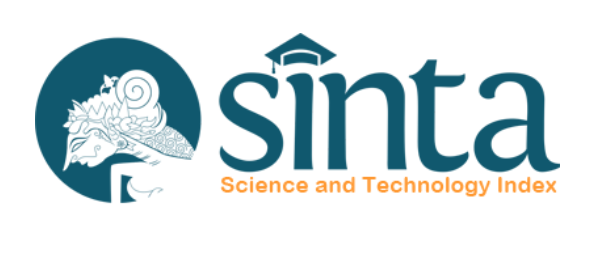TECHNICAL AND VOCATIONAL EDUCATION AND TRAINING (TVET): TEMPAT ASAS PEMBINAAN BUDAYA KESELAMATAN DI MALAYSIA
DOI:
https://doi.org/10.12928/joves.v2i2.1205Keywords:
Safety Culture Practice, Technical and Vocational Education and Training (TVET), Occupational Health.Abstract
The purpose of this study was to evaluate occupational safety and health practices among students and lecturers of the Technical Education and Vocational Training Institute (TVET) in Malaysia from the point of view of safety practice, implementation level, compliance and cultural level of occupational safety and health practices. The methodology used in this study uses a quantitative approach. The study was carried out in two parts, Part A was about the personal information of the respondents and Part B was the survey using a questionnaire with respondents from several Technical Education and Vocational Training institutes (TVET) such as Vocational College (KV), Industrial Training Institute (ILP) , National Youth Skills Institute (IKBN) and Mara Skills Institute (IKM). Descriptive statistics tests used to describe occupational safety and health practices, levels of occupational safety and health, occupational safety and health compliance and occupational safety and health culture, found that they applied high level of practice, safety implementation. This means that almost all students and faculty agree that compliance with occupational safety and health practices is of utmost importance and practiced. From this culture of safety practices will create a safe work culture, which will indirectly create a safety culture. An organization that provides a safe environment will benefit workers in their work activities
References
Ahmad, S. (2002) Penghasilan manual keselamatan bengkel kimpalan: Satu tinjauan di Institut Latihan Perindustrian Muar. Thesis. Kolej Universiti Teknologi Tun Hussein Onn.
Ahmadon, B. (2006). Occupational safety and health (OSH) management systems: Towards development of safety and health culture. Proceedings of the 6th Asia-Pacific Structural Engineering and Construction Conference (APSEC 2006), 5-6 September 2006, Kuala Lumpur.
Aminuddin, A. K. (2011). Reformasi dalam TVET: Perubahan masa hadapan. Journal of Edupres, 1, 336–341.
AKKP – Akta Keselamatan dan Kesihatan Pekerjaan. (1994). Peraturan-peraturan Keselamatan dan Kesihatan Pekerjaan. Jawatankuasa Keselamatan dan Kesihatan Malaysia.
Akta Kilang dan Jentera .(1967) - DOSH. Retrieved from: http://www.dosh.gov.my/index.php/ms/perundangan/akta/565-03-akta-kilang-dan-jentera.
Azhar, K. (2008). Amalan keselamatan bengkel di kalangan pelajar-pelajar tingkatan 3 aliran Kemahiran Hidup Sekolah Menengah Kebangsaan Tama Conveinct. Retrieved from: http://www.fp.utm.my/ePusatSumber/pdffail/ptkghdfwP/KHAIRULAP040511 D2008TTP.pdf.
Bahari. (2006). Pengurusan Keselamatan dan Kesihatan Pekerjaan. Kuala Lumpur: McGraw-Hill.
Bakar, N. A. (2012). Penguasaan amalan keselamatan bengkel di kalangan pelajar kursus Elektrik di salah sebuah kolej komuniti di Negeri Selangor. Dissertation. Universiti Teknologi Malaysia.
Berita Harian. (2019). Persidangan TVET 2019 ‘Human Capital Development to Enhance Future Skills Agenda’ di Putrajaya. Retrieved from: Berita Harian Online.
Charles, A. W. (1998). Safety, Health and Environmental Protection. United States: McGraw Hill Companies.
Creswell, J. W. (2010). Research design: pendekatan kualitatif, kuantitatif, dan mixed. Yogjakarta: PT Pustaka Pelajar.
Haron, H. (2008). Perlaksanaan Akta Keselamatan dan Kesihatan Pekerjaan, 1994 di Institut Latihan Awam. Thesis. Universiti Teknologi Malaysia.
Holt. (2005). Principles of Construction Safety. Oxford: Blackwell Science.
Idrus, D. (2004). Tahap kesedaran staf Universiti Teknologi Malaysia terhadap keselamatan dan kesihatan di tempat kerja. UTM.
Jabatan Keselamatan dan Kesihatan Pekerjaan. (2015). Statistik Kemalangan Pekerjaan Mengikut Sektor sehingga Disember 2015. Retrieved from http://www.dosh.gov.my/index.php/
KPM. (2012). Pelan Pembangunan Pendidikan Malaysia 2013-2025.
Putrajaya: Kementerian Pendidikan Malaysia, Putrajaya.
Kementerian Sumber Manusia. (2015). Statistik pekerjaan dan perburuhan. Retrieved from: http://myhos.mohr.gov.my/ebook/istatistik1_2015/bil1_ 2015.
Mazliah & Rahman, A. (2012). Tahap Kesedaran Guru-Guru Tadika Terhadap Keselamatan dan Kesihatan Pekerjaan di Tempat Kerja. Retrieved from: http://etd.uum.edu.my/3015/.
Misnan, M. S. (2011). Pembangunan Budaya Keselamatan di Tempat Kerja. Skudai: UTM Press.
Mohd Jalil, A., Noor Hisham, J., & Annas, A.H. (2015). TEVT di Malaysia: Cabaran dan Harapan. Seminar Kebangsaan Majlis Dekan- Dekan Pendidikan Awam 2015.
Norizzaidah, A. B. (2012). Penguasaan amalan keselamatan bengkel di kalangan pelajar kursus elektrik di salah sebuah kolej komuniti di negeri Selangor. Tesis Ijazah Sarjana Muda Teknologi serta Pendidikan Universiti Teknologi.
Onn, F. C. (2000). Teks Ucapan Pelancaran Kempen Bulan Keselamatan Dan Kesihatan Pekerjaan Pekerjaan. Kuala Lumpur: Kementerian Sumber Manusia.
Rancangan Malaysia. (2010). Rancangan Malaysia Kesepuluh 2011-2015. Putrajaya: Unit Perancang Ekonomi, Jabatan Perdana Menteri.
Roslena, C. J. (2012). Tahap Kesediaan Pelajar kejuruteraan Poleteknik terhadap Keselamatan di Dalam Bengkel. Thesis. Universiti Teknologi Tun Hussein Onn.
Downloads
Published
Issue
Section
License
Authors who publish with Journal of Vocational Education Studies (JOVES) agree to the following terms: Authors retain the copyright and grant the Universitas Ahmad Dahlan right of first publication with the work simultaneously licensed under a Creative Commons Attribution License (CC BY-SA 4.0) that allows others to share (copy and redistribute the material in any medium or format) and adapt (remix, transform, and build upon the material) the work for any purpose, even commercially with an acknowledgement of the work's authorship and initial publication in Universitas Ahmad Dahlan. Authors are able to enter into separate, additional contractual arrangements for the non-exclusive distribution of the journal's published version of the work (e.g., post it to an institutional repository or publish it in a book), with an acknowledgement of its initial publication in Universitas Ahmad Dahlan. Authors are permitted and encouraged to post their work online (e.g., in institutional repositories or on their website) prior to and during the submission process, as it can lead to productive exchanges, as well as earlier and greater citation of published work (See The Effect of Open Access).









.png)



